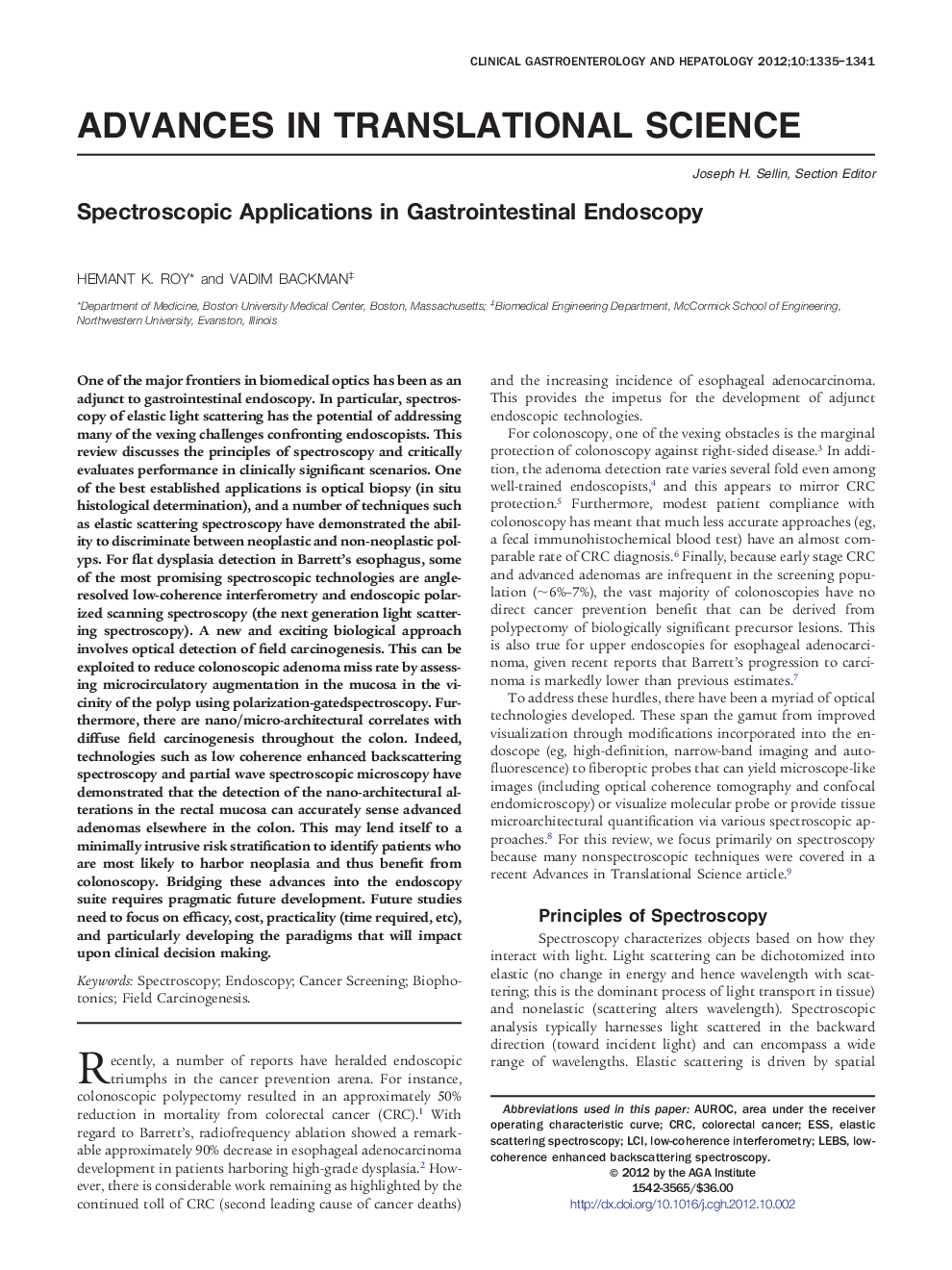| کد مقاله | کد نشریه | سال انتشار | مقاله انگلیسی | نسخه تمام متن |
|---|---|---|---|---|
| 3282341 | 1589918 | 2012 | 7 صفحه PDF | دانلود رایگان |
عنوان انگلیسی مقاله ISI
Spectroscopic Applications in Gastrointestinal Endoscopy
دانلود مقاله + سفارش ترجمه
دانلود مقاله ISI انگلیسی
رایگان برای ایرانیان
کلمات کلیدی
ESSLCIAUROCElastic scattering spectroscopyEndoscopy - آندوسکوپیBiophotonics - بیوفوتونیکLow-coherence interferometry - تداخل سنجی کماهمیتColorectal cancer - سرطان روده بزرگSpectroscopy - طیفسنجیCancer screening - غربالگری سرطانarea under the receiver operating characteristic curve - محدوده تحت منحنی مشخصه عملکرد گیرندهCRC - کد افزونگی دورهای
موضوعات مرتبط
علوم پزشکی و سلامت
پزشکی و دندانپزشکی
بیماریهای گوارشی
پیش نمایش صفحه اول مقاله

چکیده انگلیسی
One of the major frontiers in biomedical optics has been as an adjunct to gastrointestinal endoscopy. In particular, spectroscopy of elastic light scattering has the potential of addressing many of the vexing challenges confronting endoscopists. This review discusses the principles of spectroscopy and critically evaluates performance in clinically significant scenarios. One of the best established applications is optical biopsy (in situ histological determination), and a number of techniques such as elastic scattering spectroscopy have demonstrated the ability to discriminate between neoplastic and non-neoplastic polyps. For flat dysplasia detection in Barrett's esophagus, some of the most promising spectroscopic technologies are angle-resolved low-coherence interferometry and endoscopic polarized scanning spectroscopy (the next generation light scattering spectroscopy). A new and exciting biological approach involves optical detection of field carcinogenesis. This can be exploited to reduce colonoscopic adenoma miss rate by assessing microcirculatory augmentation in the mucosa in the vicinity of the polyp using polarization-gatedspectroscopy. Furthermore, there are nano/micro-architectural correlates with diffuse field carcinogenesis throughout the colon. Indeed, technologies such as low coherence enhanced backscattering spectroscopy and partial wave spectroscopic microscopy have demonstrated that the detection of the nano-architectural alterations in the rectal mucosa can accurately sense advanced adenomas elsewhere in the colon. This may lend itself to a minimally intrusive risk stratification to identify patients who are most likely to harbor neoplasia and thus benefit from colonoscopy. Bridging these advances into the endoscopy suite requires pragmatic future development. Future studies need to focus on efficacy, cost, practicality (time required, etc), and particularly developing the paradigms that will impact upon clinical decision making.
ناشر
Database: Elsevier - ScienceDirect (ساینس دایرکت)
Journal: Clinical Gastroenterology and Hepatology - Volume 10, Issue 12, December 2012, Pages 1335-1341
Journal: Clinical Gastroenterology and Hepatology - Volume 10, Issue 12, December 2012, Pages 1335-1341
نویسندگان
Hemant K. Roy, Vadim Backman,